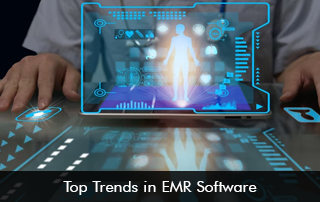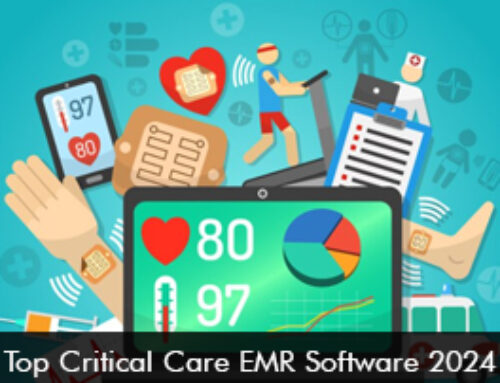2024 is around the corner, so it makes sense to shed light on the main trends that will dominate Electronic Medical Records (EMR) Software systems technology. The future of EHR Software looks very promising due to improved integration with other systems and the use of generative AI to enhance workflows and reduce administrative burdens on providers.
Data Breaches – Patient Data Security a Top Priority in 2024 in EMR Software
When we talk about patient data it is very sensitive and personal hence data security and encryption protocols will be the top priority of electronic health records software vendors. Recent data breaches stress that patient data security is not a trivial matter. In 2024 it is expected that healthcare organizations and insurance providers make use of biometric authentication to offer additional security.
Moving to Cloud-Computing for Data Security
Cloud-based EMR Software systems offer robust security and encryption of patient data for the following reasons:
- Advanced Security Measures – Strong security features, like as access controls, encryption methods, and frequent security upgrades, are deployed by cloud-based EHR systems.
- Data Encryption – Cloud-based patient data is frequently secured both in transit and at rest. This implies that in the event of unwanted access, the data cannot be decrypted without the necessary keys.
- Disaster Recovery – Cloud-based technology frequently uses redundant data storage distributed across numerous servers and locations. This redundancy ensures not just high availability but also backup choices in the event of system breakdowns or disasters, lowering the chance of data loss.
- Regular Updates – Cloud-based EHR software vendors such as athenahealth EMR Software, AdvancedMD Software, and Tebra update their systems regularly to address security issues and deploy updates as soon as possible. This proactive approach to system maintenance aids in the reduction of potential security threats.
3 Key EMR Software Trends 2024
Robotic Process Automation
Robotic process automation facilitates improved workflows and make way for accuracy. Robotic process automation (RPA) is the employment of software robots, or bots, to automate repetitive, rule-based processes within the EMR system.
RPA technology streamlines workflows and boosts productivity in healthcare businesses by automating a variety of administrative, clerical, and data-related tasks. Some RPA platform also improves integration with existing software systems. It is estimated that the global robotic process automation market will exceed more than $13 billion by 2030.
EHR Software Integration with Telehealth
The COVID-19 pandemic confirmed that telehealth software was the backbone of remote care options for patients. Patients recognize telehealth visits as effective as in-person doctor visits. When EMR Software is integrated with a telemedicine platform it helps to improve workflows and enable providers to seamlessly share patient data from one system to another.
Telehealth and EMR software integration can reap the following benefits for practices,
- Boost patient and physician engagement.
- Virtual Care is simplified.
- Insurance data is synchronized in one place.
- Improve collaboration.
- Update patient records automatically.
Generative AI Tools in EHR Software
Generative AI is taking over the world and the healthcare sector is no exception. Many Electronic Medical Records (EMR) Software vendors are leveraging generative AI technology in their systems to simplify workflows and aid clinicians in offering patient-centered care.
For instance, Epic EMR Software is using generative AI technology to speed up message response time. Generative AI can easily draft a response note and providers can review it. This gives more time for the clinician to focus on patient care.
The advancements and the sophistication in new technology solutions will make it more possible for software vendors to improve their functionality and offerings to users in 2024.







